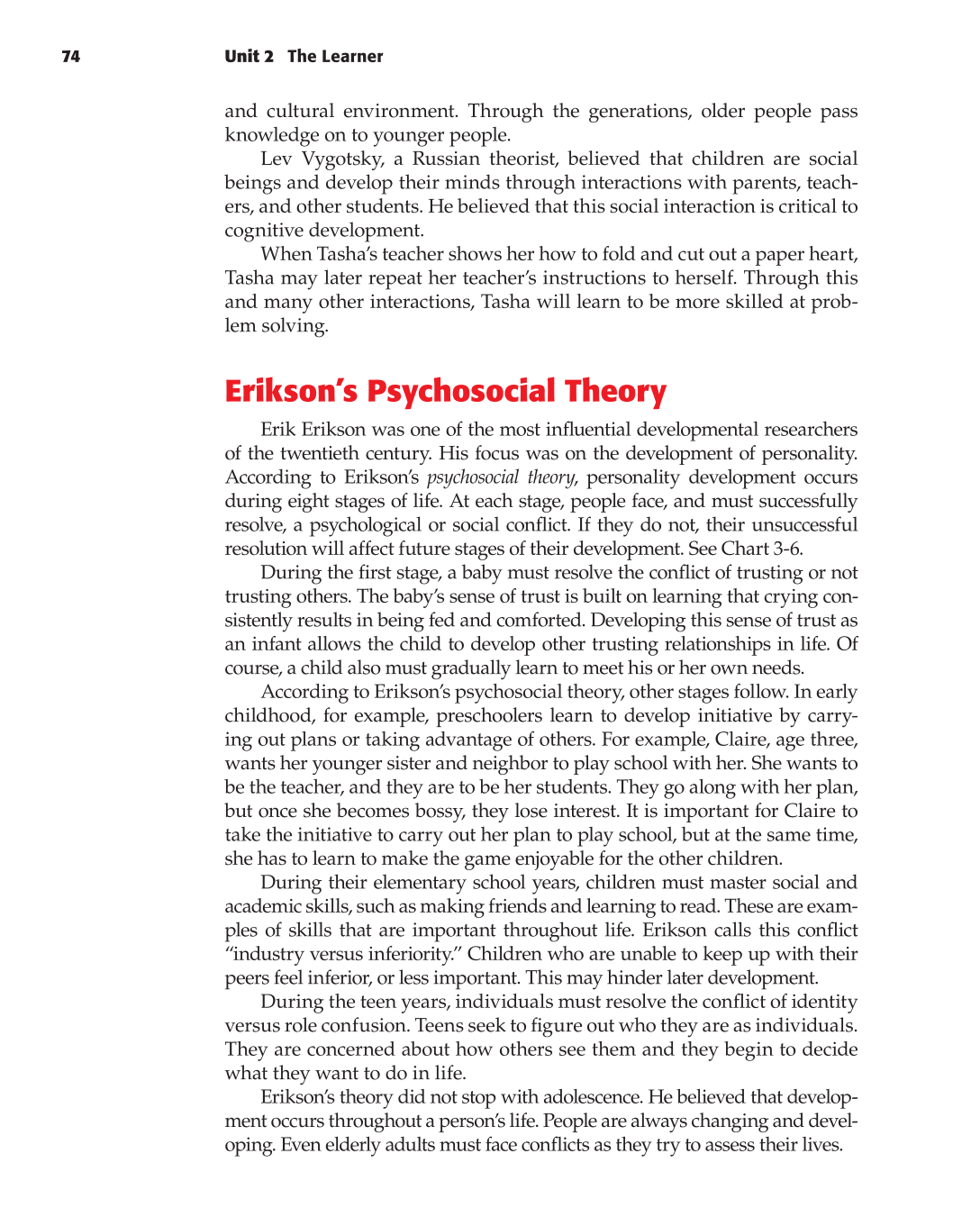74 Unit 2 The Learner
and cultural environment. Through the generations, older people pass
knowledge on to younger people.
Lev Vygotsky, a Russian theorist, believed that children are social
beings and develop their minds through interactions with parents, teach-
ers, and other students. He believed that this social interaction is critical to
cognitive development.
When Tasha’s teacher shows her how to fold and cut out a paper heart,
Tasha may later repeat her teacher’s instructions to herself. Through this
and many other interactions, Tasha will learn to be more skilled at prob-
lem solving.
Erikson’s Psychosocial Theory
Erik Erikson was one of the most infl uential developmental researchers
of the twentieth century. His focus was on the development of personality.
According to Erikson’s psychosocial theory, personality development occurs
during eight stages of life. At each stage, people face, and must successfully
resolve, a psychological or social confl ict. If they do not, their unsuccessful
resolution will affect future stages of their development. See Chart 3-6.
During the fi rst stage, a baby must resolve the confl ict of trusting or not
trusting others. The baby’s sense of trust is built on learning that crying con-
sistently results in being fed and comforted. Developing this sense of trust as
an infant allows the child to develop other trusting relationships in life. Of
course, a child also must gradually learn to meet his or her own needs.
According to Erikson’s psychosocial theory, other stages follow. In early
childhood, for example, preschoolers learn to develop initiative by carry-
ing out plans or taking advantage of others. For example, Claire, age three,
wants her younger sister and neighbor to play school with her. She wants to
be the teacher, and they are to be her students. They go along with her plan,
but once she becomes bossy, they lose interest. It is important for Claire to
take the initiative to carry out her plan to play school, but at the same time,
she has to learn to make the game enjoyable for the other children.
During their elementary school years, children must master social and
academic skills, such as making friends and learning to read. These are exam-
ples of skills that are important throughout life. Erikson calls this confl ict
“industry versus inferiority.” Children who are unable to keep up with their
peers feel inferior, or less important. This may hinder later development.
During the teen years, individuals must resolve the confl ict of identity
versus role confusion. Teens seek to fi gure out who they are as individuals.
They are concerned about how others see them and they begin to decide
what they want to do in life.
Erikson’s theory did not stop with adolescence. He believed that develop-
ment occurs throughout a person’s life. People are always changing and devel-
oping. Even elderly adults must face confl icts as they try to assess their lives.
